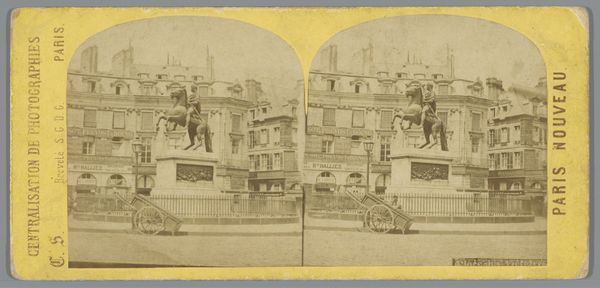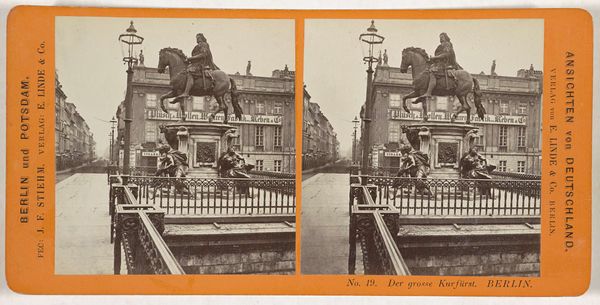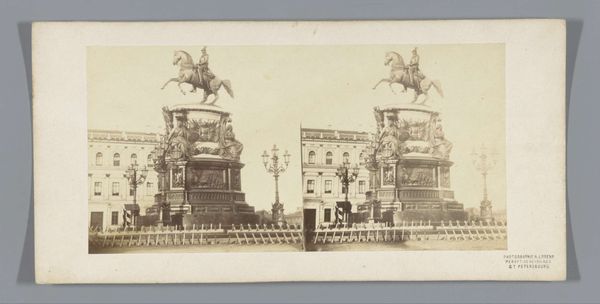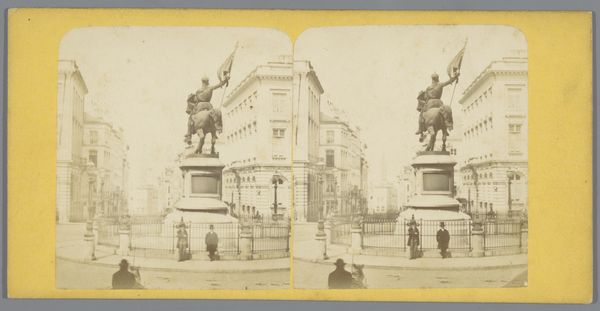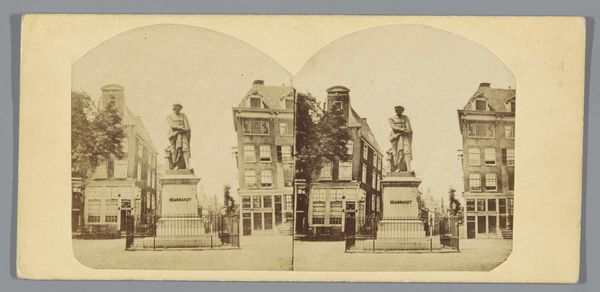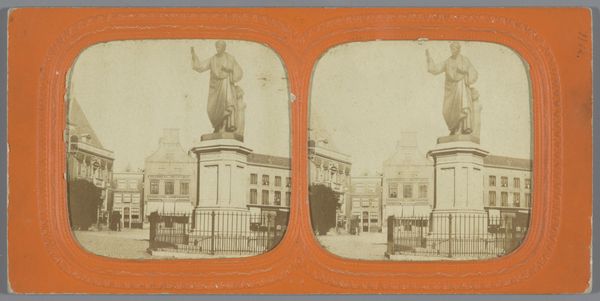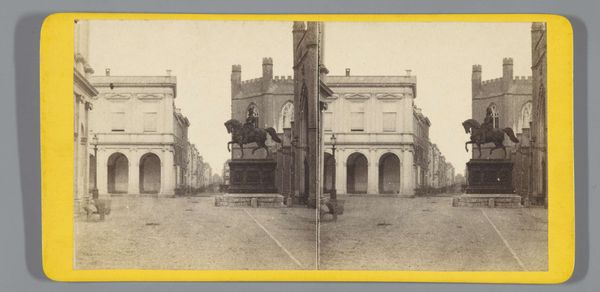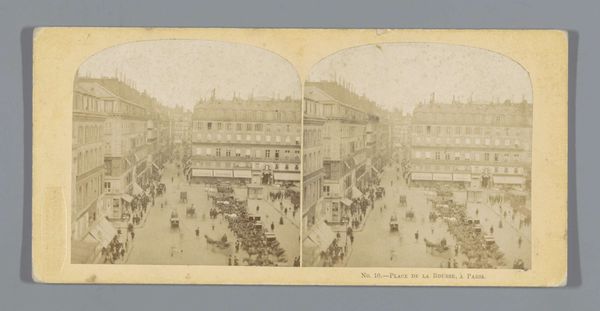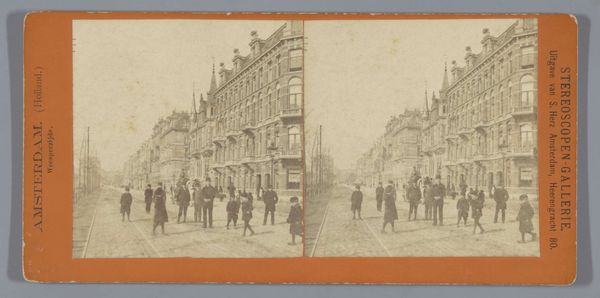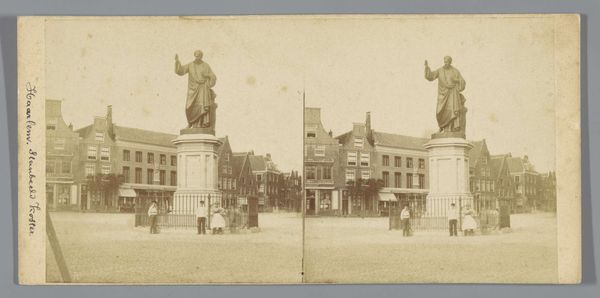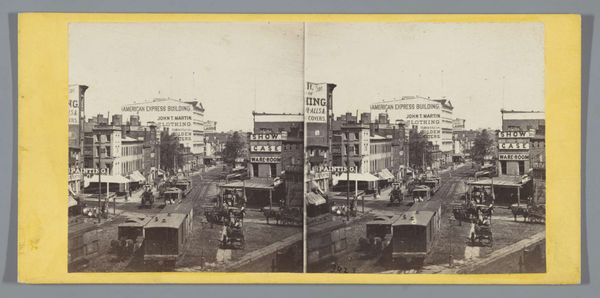
Ruiterstandbeeld van de Grote Keurvorst op het eiland in de Spree in Berlijn 1877
0:00
0:00
#
statue
#
aged paper
#
toned paper
#
light pencil work
#
pencil sketch
#
old engraving style
#
sketch book
#
personal sketchbook
#
coloured pencil
#
watercolour illustration
#
watercolor
Dimensions: height 86 mm, width 177 mm
Copyright: Rijks Museum: Open Domain
This stereoscopic image, produced by Sophus Williams around 1877, depicts the equestrian statue of the Great Elector in Berlin. It allows us to reflect on the public role of art and the politics of imagery. Statues like this were powerful tools for shaping collective memory and reinforcing social hierarchies. Erected in 1700, the statue embodies the ideals of Prussian militarism and dynastic power, designed to inspire awe and obedience among the populace. The choice of location, the Spree Island, was no accident; it was a deliberate attempt to dominate the urban landscape and project authority. To fully understand this image, we need to delve into Berlin's history, examining its political and economic structures. By exploring archives, newspapers, and other period sources, we can better grasp how this statue functioned within the social fabric of 19th-century Germany.
Comments
No comments
Be the first to comment and join the conversation on the ultimate creative platform.
